Design Process
While creating my vessels I knew I wanted to create a vessel with sharp edges almost like a star, but with multiple edges. Then I wanted to see what kind vessel I could create by adding a twist to the figures we created in class. I was able to create the different base curves by looking at mathematical formulas for their shapes. Such as using sin to create a flower pattern then adjusting n to create a certain number of pedals. Once having the functions I manipulated the sliders to see what kind of figures were generated. Depending on the object generated I will also try different rhino objects like Polyline or InterpCurve to get the desired figure.
Parametric Design Process
While creating objects via programming it allowed for more consistent figures versus the traditional process. While using rhino to create the objects if I didn’t the save or create multiple copies of the figure it would always come out different. By using grasshopper I’m able to have more precise control on what parameters are being changed. Even if the changes I made didn’t work out I could always change it back via the parameters or the script itself. Also since we’re creating objects via scripts we are able to create more complex figures without the manual input. The one disadvantage I can see is that without the physical representation more errors are likely to occur due to compatibility or user input. I also believe there are limitations creating objects via programming since if the user doesn’t fully know the capabilities of the program it may limit what the user can and can’t do.
Creative Agency and Intent
I want to know what sharp edges can become via the python script and if my 3D printer is able to produce the figure. I knew I wanted one of my vessels to have multiple sharp edges with a concave center. As shown in the pictures my printer was able to print the design. I accidently left the thickness at the max, but it worked out since you can see how the concave affected the center of the vessel. One of the figures I wanted to use flower pedals and have it appear at each level. However, when messing with the parameters I was able to create a figure that reminded me of a volcano with a smooth outer surface. Authorship does feel different since we are using an algorithmic approach instead of iteratively with rhino directly. Also this approach allows for us to think of a process versus thinking of every detail.
Rendered Images
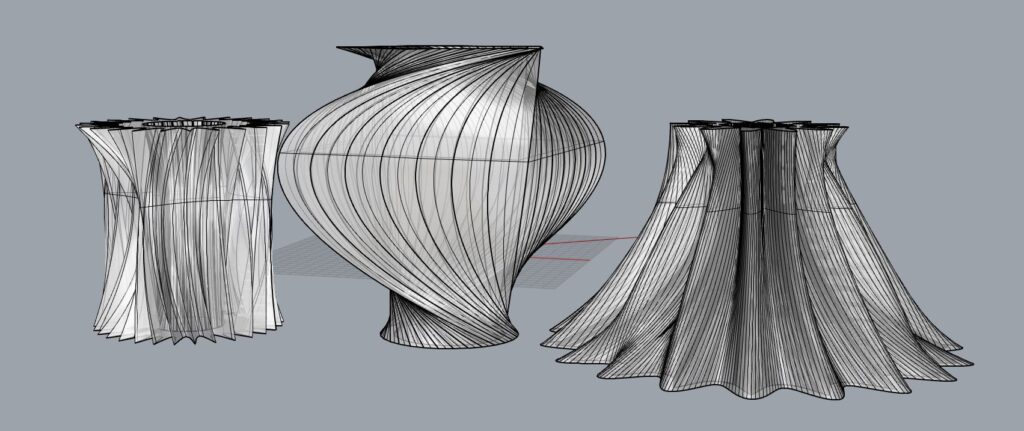
Printing Process
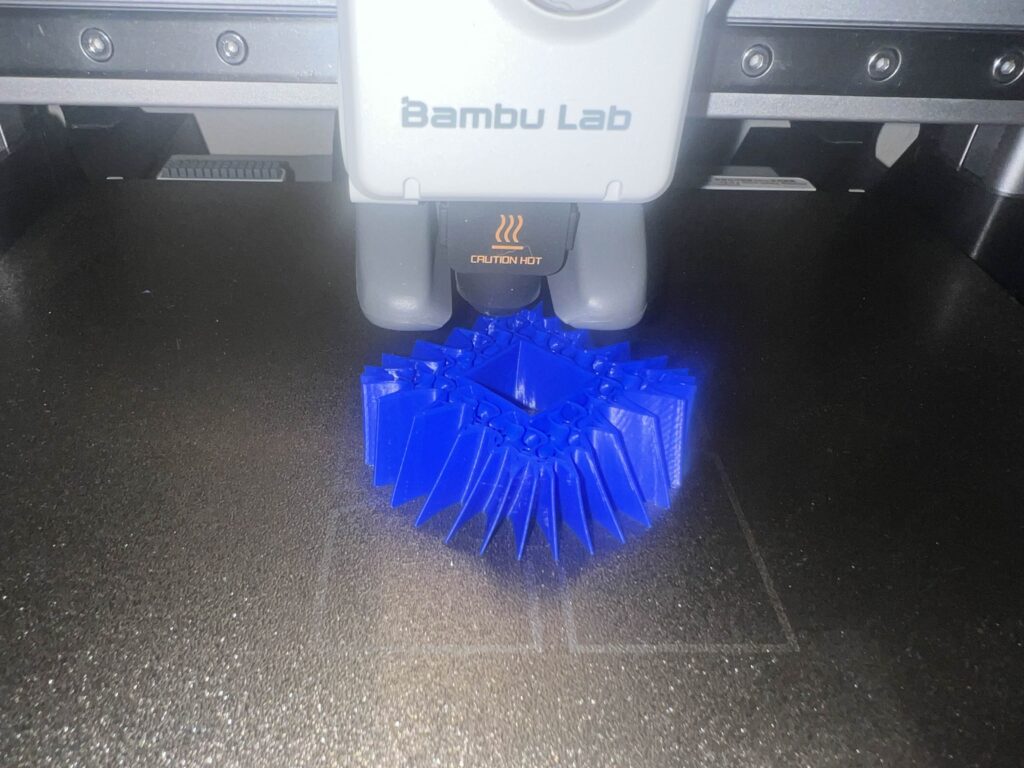
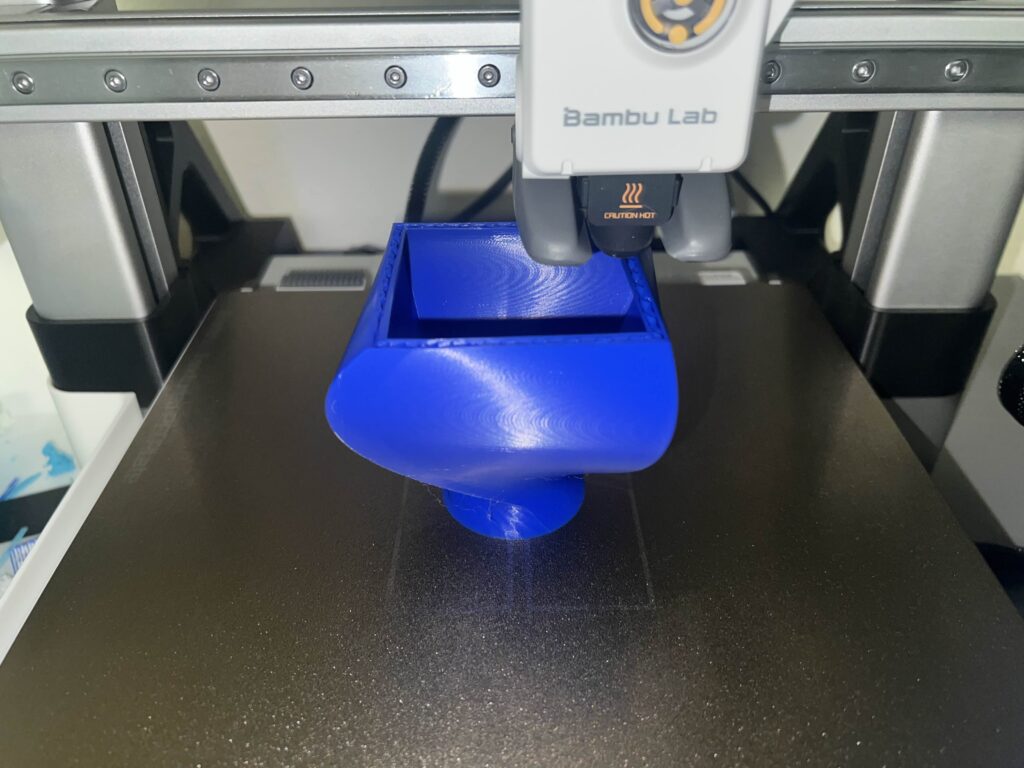
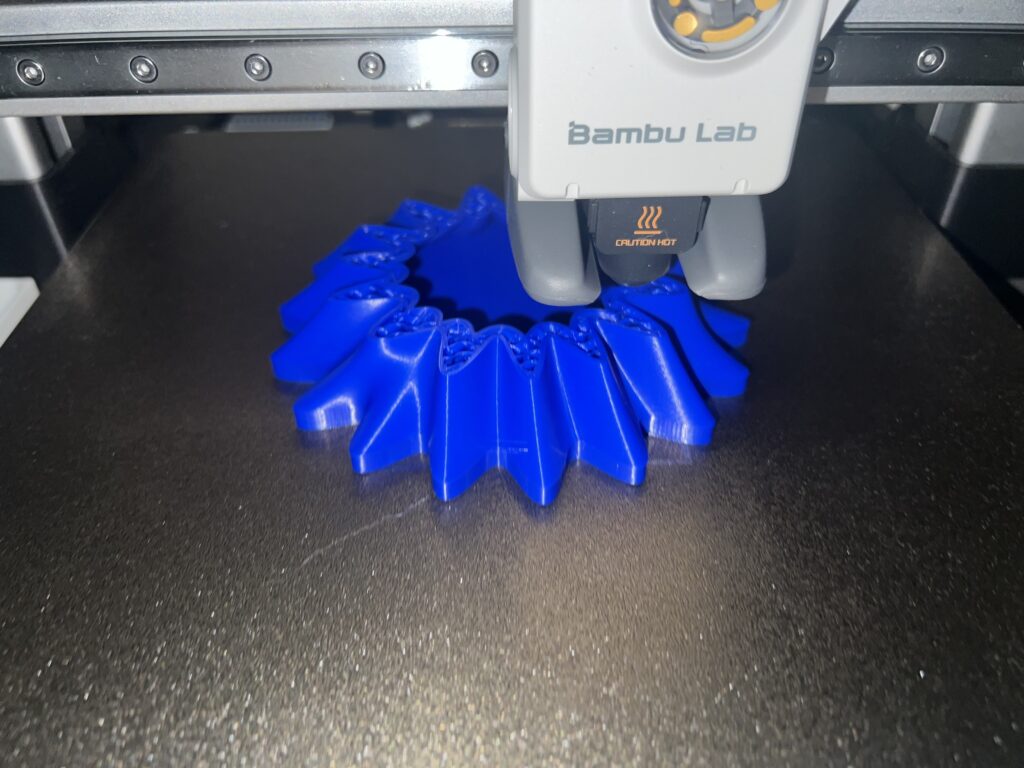
Final Print
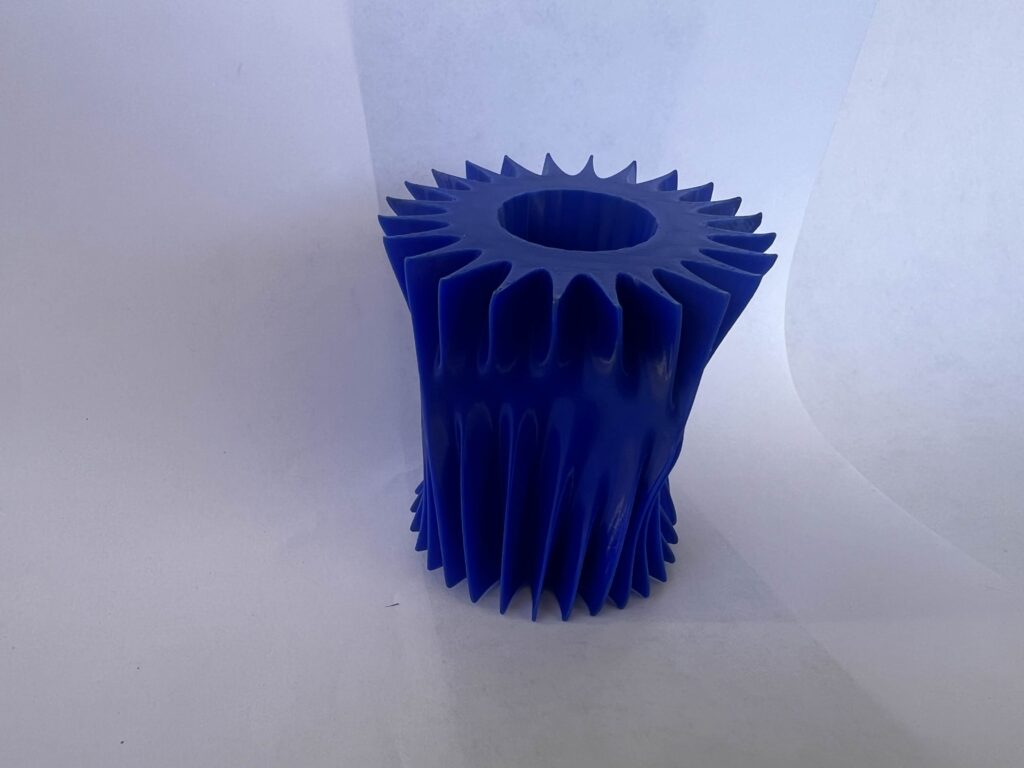
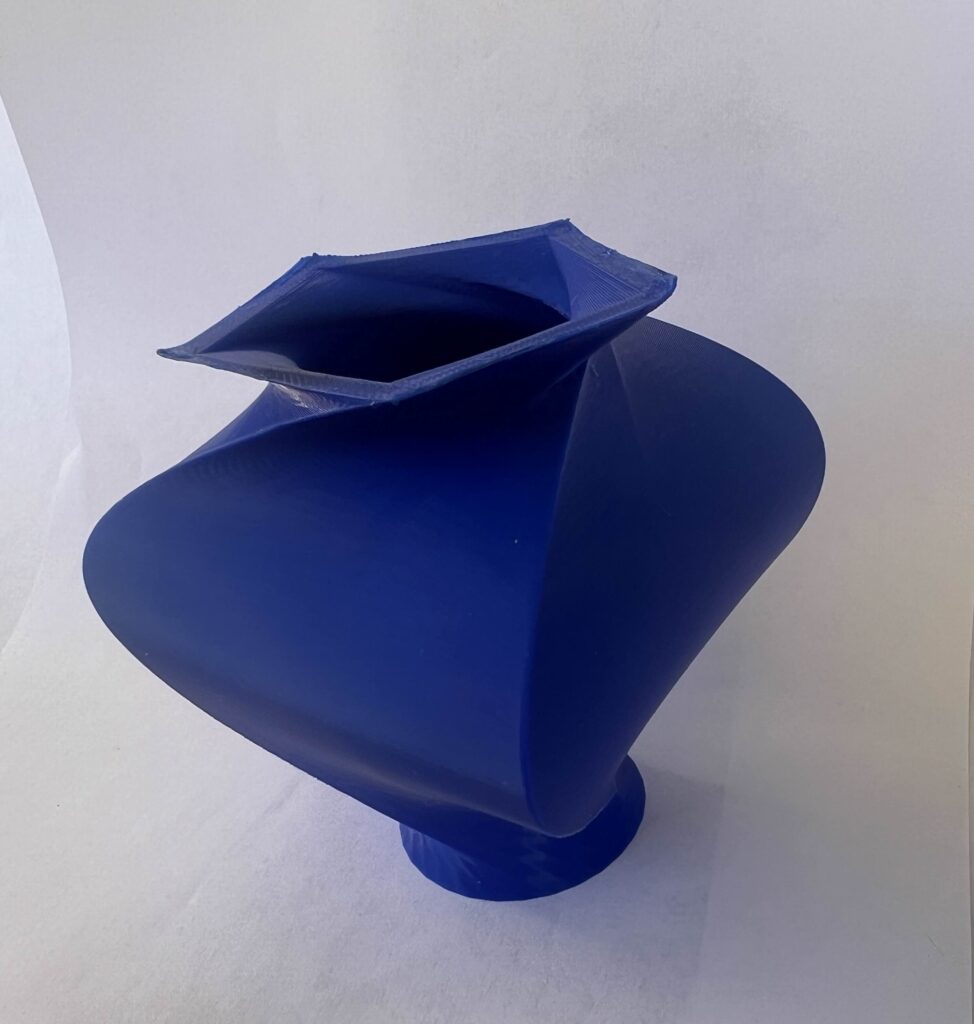
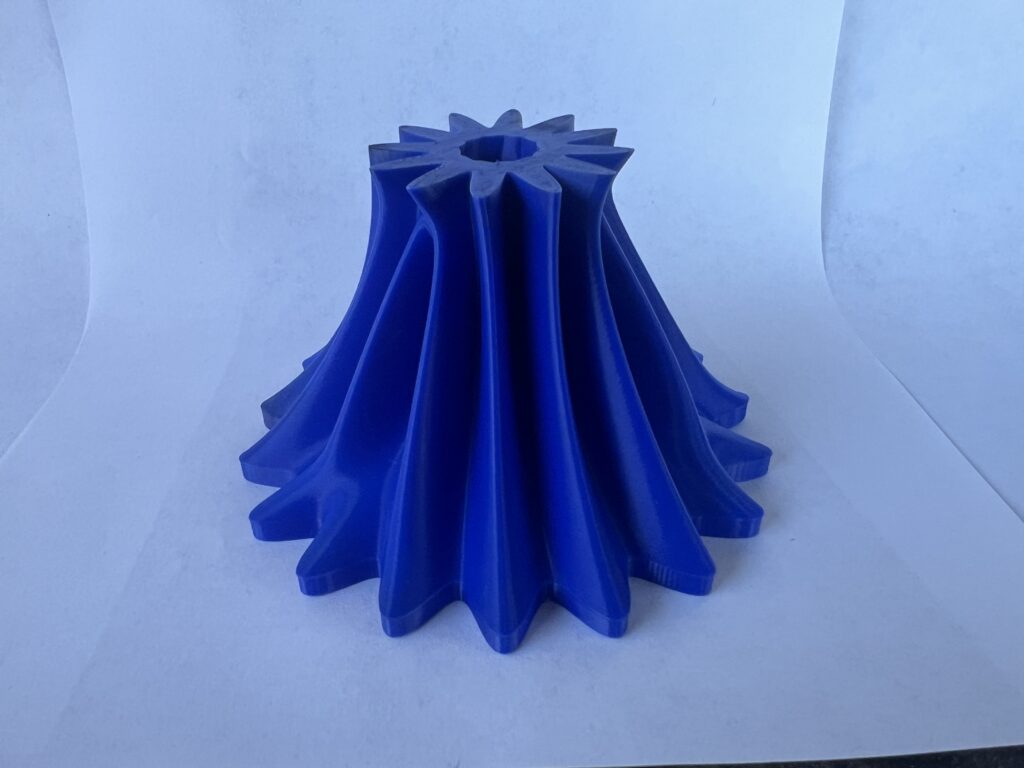
Hi Ricardo, your third vessel reminds me of Liz’s cactus vessel! I like your point about how parametric design allows you to think about the process rather than the details. At the same time, I think there are a lot of details we consider when we are printing the objects. I suppose both types of thinking just require practice to improve. Were there other sharp-edged shapes you wanted to explore?
Another sharp-edged object I wanted to explore was the helical gear shape since they’re a lot of uses for them. I also feel like it would be a good way to measure tolerance on 3D printers due to the fact gears have to mesh properly in order to function. Also by having the code it would be a quick way to create different types of gears depending on what’s needed.
Hi Ricardo,
I enjoyed your vessels that are so unique from one another. Did you have any trouble with printing the vessels considering they have some sharp edges? Like Sachi mentioned above, your comment on parametric design is interesting. I found that while doing the parametric design I would get stuck trying to perfect my code of my input to get specific detail that I was envisioning. Did you have any similar feeling when creating your shapes?
Thankfully my 3D printer didn’t have any issues with printing the sharp points. My slicer does come with presets on what quality I want my prints to come out as. I feel like If I selected one of the lower quality settings it wouldn’t have come out as nice. When creating my vessels I wasn’t so fixated on my code since I just had a rough idea on what I wanted. I more or less just used the renders to decide if I like it or not with minor adjustments with the parameters.
Ricardo,
I agree with what you said about creative agency: parametric design asks us to think more about the process (or, as I said in my reflection, a framework) than the details. Often I think that is convenient, and it can lead to more interesting designs!
I love your idea of using the sine function to create a flower-like vase, and I think that one turned out well. My favorite one is the middle vase. I really like that the middle cross-section is a square, so it has distinct corners.
Thank you! The middle vase was tricky since it had a twist and overhang elements. I originally wanted an excessive twist but using a square as the middle allowed for an aesthetic look with extreme twists at the top and bottom. One thing I noticed when applying twist to a figure is that it can decrease your wall thickness. Which can lead to random holes in the figure. This is especially true when going from one shape to another which is often where the twist is extreme. Definitely something to look out for when setting the thickness parameter.